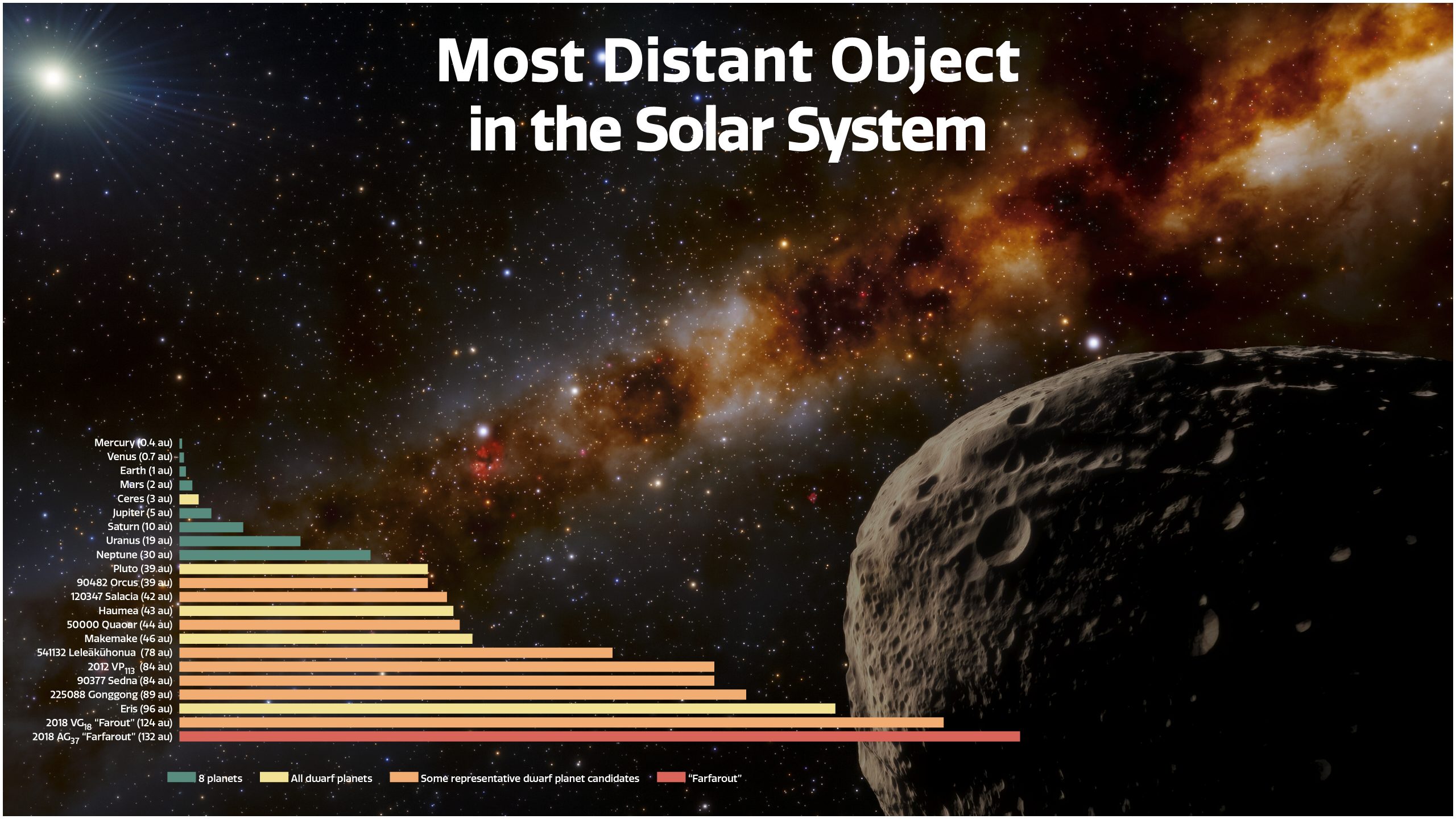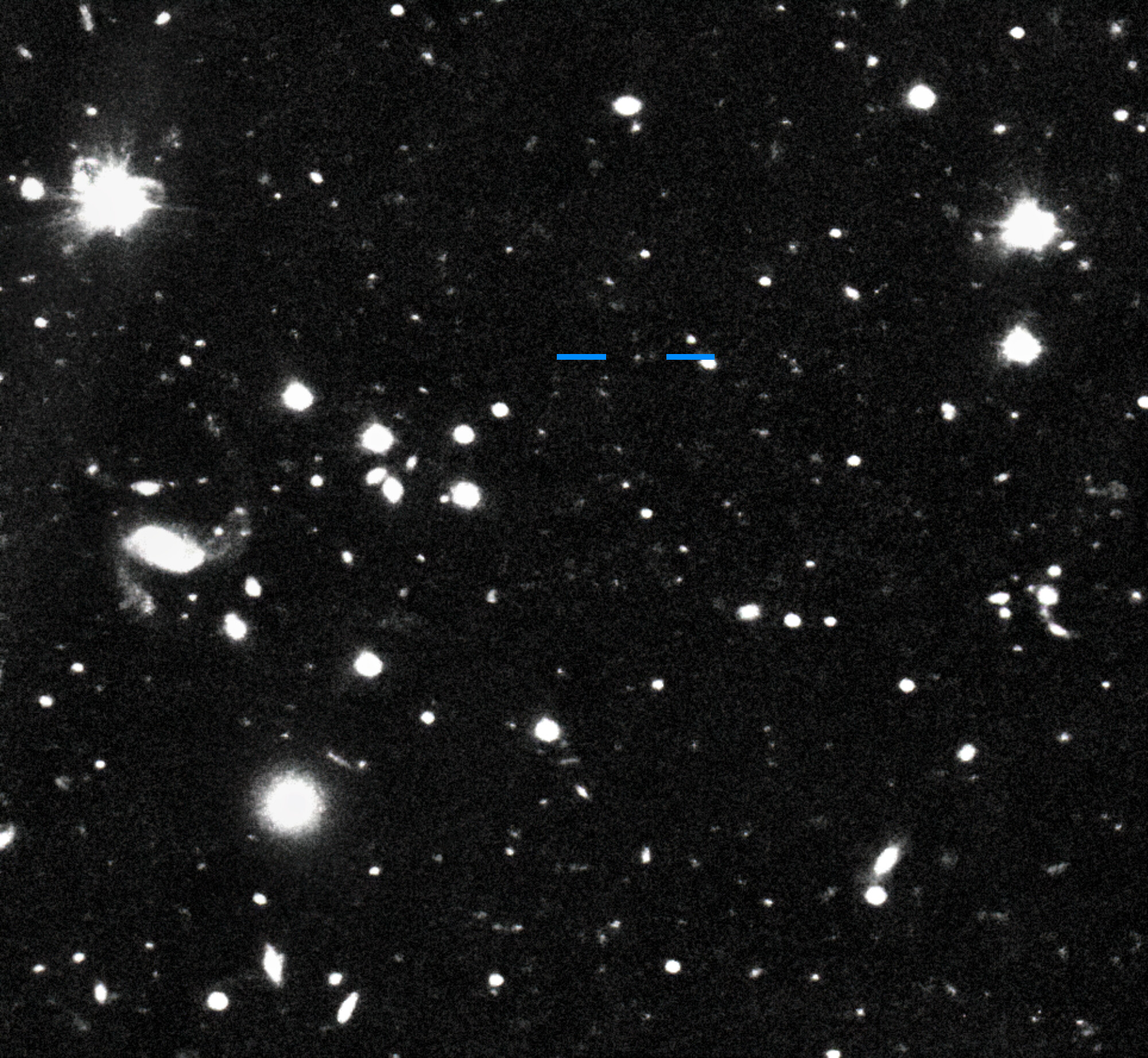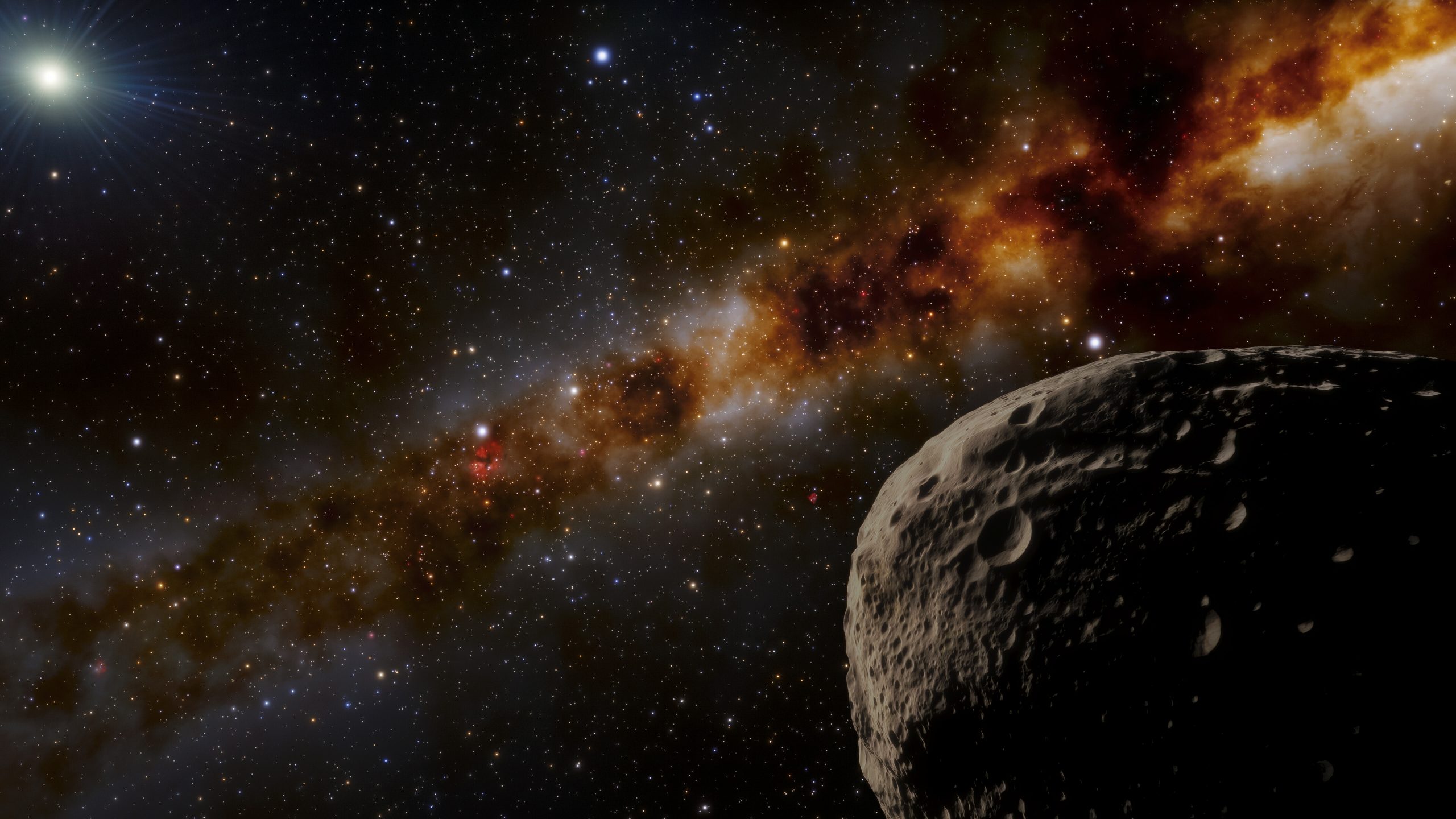Far far out is farther out than far out
It is like it is. Astronomers have now confirmed it: Dwarf planet candidate “Farfarout” really is farther away than its buddy “Farout”. Farfarout was first spotted in January 2018 by the Subaru telescope on Maunakea in Hawai’i. Its discoverers could tell it was very far away, but they weren’t sure exactly how far. They needed more observations.
“At that point, we didn’t know the orbit of the object because we only had the Subaru discovery observations over 24 hours, but it takes years of observations to get the orbit of an object around the Sun,” explained co-discoverer Scott Sheppard of the Carnegie Institution for Science. “All we knew was that the object appeared to be very far away at the time of discovery.”
Sheppard and his colleagues, David Tholen of the University of Hawai’i and Chad Trujillo of Northern Arizona University, spent the next several years tracking the object with the Gemini North telescope (also at Maunakea in Hawai’i) and the Magellan telescopes at the Carnegie Institution for Science in Chile to determine its orbit. They have now confirmed that Farfarout is currently 132 astronomical units (AU) from the Sun, which is 132 times farther from the Sun than Earth. (For comparison, Pluto is an average of 39 AU from the Sun).
Farfarout is even farther away than the previous distance record holder in the solar system, which was discovered by the same team and nicknamed “Farout.” Tentatively designated 2018 VG18, Farout is 124 AU from the Sun.
However, Farfarout’s orbit is quite elongated, moving 175 AU from the Sun at its farthest point and about 27 AU at its closest point, which lies within Neptune’s orbit. Because its orbit crosses that of Neptune, the object could provide insights into the history of the outer solar system.
“Farfarout was probably flung into the outer solar system because it came too close to Neptune in the distant past,” Trujillo says. “Farfarout will probably interact with Neptune again in the future because their orbits still overlap.”
Farfarout is very faint. Based on its brightness and distance from the Sun, the team estimates it is about 400 kilometers across, which puts it at the low end of the International Astronomical Union’s (IAU) possible classification as a dwarf planet.
The IAU’s Minor Planet Center in Massachusetts announced today that it has given Farfarout the preliminary designation 2018 AG37. The most distant known member of the solar system will receive an official name after more observations are collected and its orbit is further refined in the coming years.
“Farfarout takes a millennium to go around the sun once,” Tholen says. “Therefore, it moves very slowly across the sky and requires several years of observations to accurately determine its trajectory.”


